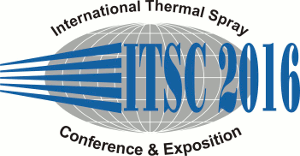
|
4766 |
|
Thursday, May 12, 2016, Room 3G 2:20 PM Plasma Spraying |
|
Plasma sprayed composite coatings for severe conditions in nuclear power plants |
|
Arnaud Werry / SPCTS - Centre Européen de la Céramique, France Armelle Vardelle / Université de Limoges, SPCTS - UMR CNRS 7315, France Alain Denoirjean*/ Université de Limoges, SPCTS - UMR CNRS 7315, France Stéphane Valette/ Université de Limoges, SPCTS - UMR CNRS 7315, France Christophe Chazelas/ Université de Limoges, SPCTS - UMR CNRS 7315, France Erick Meillot/ LPTh - CEA Le Ripault, France |
|
The Sodium-cooled Fast Reactor (SFR) operates in fast neutron spectrum with a closed fuel cycle; it makes an efficient use of uranium resources and has the ability to burn actinides and so achieve sustainable development of nuclear energy. It also uses liquid sodium as primary coolant; the latter has a high boiling point, low heat capacity and high thermal conductivity and ensures a significant boiling margin in normal operation (more than 300°C) associated with a high thermal inertia and a non-pressurized primary system. Another feature of liquid sodium is its capacity to act as a reducing agent and remove the protective oxide layer that forms on the stainless steel (SS) components of the primary coolant circuit and thus it can bring about the self-welding of the metal components subjected to high-pressure contact. The idea developed in this work was to protect the SS components by using composite coatings made from cobalt-free nickel-base alloy and submicronic alumina particles. The coatings were prepared by plasma spraying combining powder of the metallic matrix and suspension of ceramic particles. The effect of the addition of ceramic particles in the metallic matrix was investigated by the observation of the microstructure of coatings, and the comparison of their mechanical behavior (micro hardness and tribological tests representative of the application) for different ceramic particle contents (from 0 to 18 wt% content) |